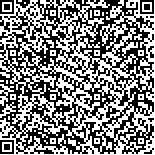| 摘要: |
| [摘要] 目的 探讨经皮肾镜碎石术治疗复杂性肾结石过程中采取不同手术体位对疗效的影响。方法 选择2016-06~2018-06在该院就诊的复杂性肾结石患者共150例,根据不同的手术体位分为俯卧位组、斜仰卧位组及截石斜仰卧位组,每组50例。比较三组患者的手术时间、术中出血量、住院时间、术中体位舒适度、结石清除率以及并发症发生率。结果 截石斜仰卧位组患者的手术时间显著短于斜仰卧位组和俯卧位组(P<0.01);斜仰卧位组手术时间显著短于俯卧位组(P<0.01)。三组患者的术中出血量、住院时间、结石清除率比较差异无统计学意义(P>0.05)。截石斜仰卧位组患者术中体位舒适度评分为(103.41±11.86)分,明显高于斜仰卧位组[(92.03±10.88)分]和俯卧位组[(91.76±10.83)分](P<0.01)。斜仰卧位组和俯卧位组术中舒适度评分比较差异无统计学意义(P>0.05)。截石斜仰卧位组患者术中体位舒适率明显高于斜仰卧位组和俯卧位组(P<0.05),斜仰卧位组和俯卧位组术中舒适率比较差异无统计学意义(P>0.05)。三组术后并发症(感染、出血、肾损伤、肾周血肿、肠管损伤)发生率比较差异无统计学意义(P>0.05)。结论 采取俯卧位、斜仰卧位、截石斜仰卧位经皮肾镜碎石术治疗复杂性肾结石患者效果相当。与俯卧位和斜仰卧位比较,截石斜仰卧位可明显缩短手术时间及提高患者的体位舒适度。 |
| 关键词: 经皮肾镜碎石术 复杂性肾结石 手术体位 |
| DOI:10.3969/j.issn.1674-3806.2019.09.22 |
| 分类号:R 692.4 |
| 基金项目: |
|
| Investigation of surgical positions of percutaneous nephrolithotripsy in treatment of complicated renal calculi |
|
WEI Gui-jian, HUANG Li-zhen
|
|
Department of Urinary Surgery, the People′s Hospital of Donglan County, Guangxi 547400, China
|
| Abstract: |
| [Abstract] Objective To investigate the clinical effects of different surgical positions of percutaneous nephrolithotripsy on treatment of complicated renal calculi. Methods One hundred and fifty patients with complicated renal calculi were selected in our hospital from June 2016 to June 2018 and were divided into prone position group,oblique supine position group and rock-amputation oblique supine position group according to different surgical positions, with 50 cases in each group. The operation time, intraoperative blood loss, hospital stay, intraoperative postural comfort, stone clearance rate and complication rate were compared among the three groups. Results The operation time of the rock-amputation oblique supine position group was significantly shorter than that of the oblique supine position group and the prone position group(P<0.01). The operation time of the oblique supine position group was significantly shorter than that of the prone position group(P<0.01). There were no significant differences in the intraoperative blood loss, hospital stay and stone clearance rate among the three groups(P>0.05). The intraoperative postural comfort scores of the patients in the rock-amputation oblique supine position group[(103.41±11.86)points] were significantly higher than those in the oblique supine position group[(92.03±10.88)points] and the prone position group[(91.76±10.83)points](P<0.01). There were no significant differences in the intraoperative postural comfort scores between the oblique supine position group and the prone position group(P>0.05). The intraoperative postural comfort rate of the rock-amputation oblique supine position group was significantly higher than that of the prone position group and the oblique supine position group(P<0.05). There was no significant difference in the intraoperative postural comfort rate between the prone position group and the oblique supine position group(P>0.05). There was no significant difference in the rate of postoperative complications(infection, hemorrhage, renal injury, perirenal hematoma and intestinal damage) rate among the three groups(P>0.05). Conclusion The clinical effects of percutaneous nephrolithotripsy on treating complicated renal calculi with prone position, oblique supine position and rock-amputation oblique supine position are equivalent, but the rock-amputation oblique supine position has shorter operation time and better comfortable position than the prone position group and the oblique supine position group. |
| Key words: Percutaneous nephrolithotripsy Complicated renal calculi Surgical position |

